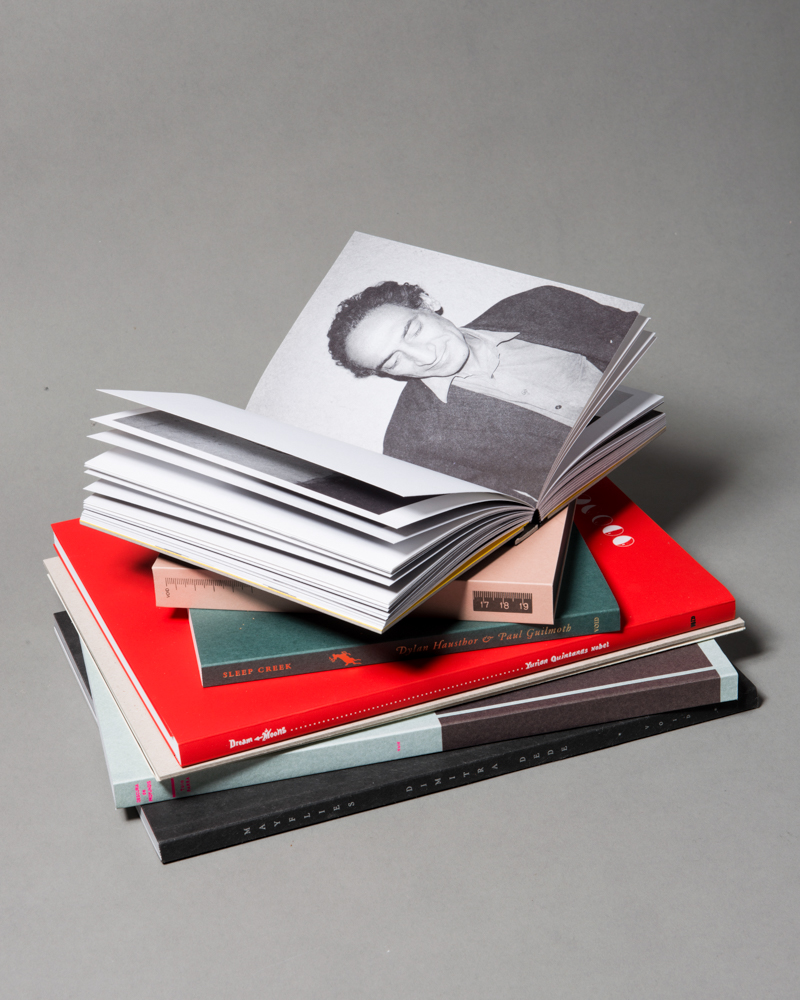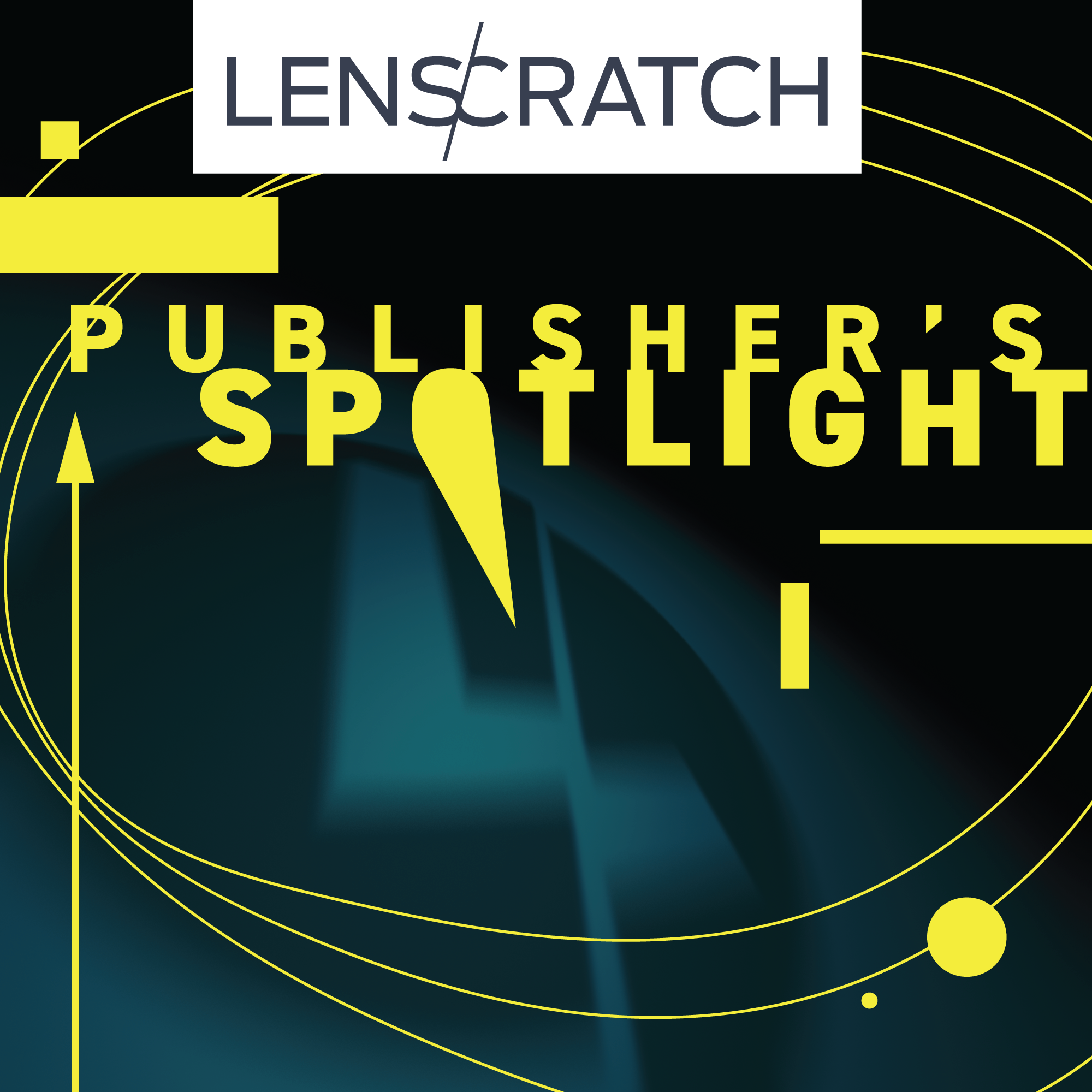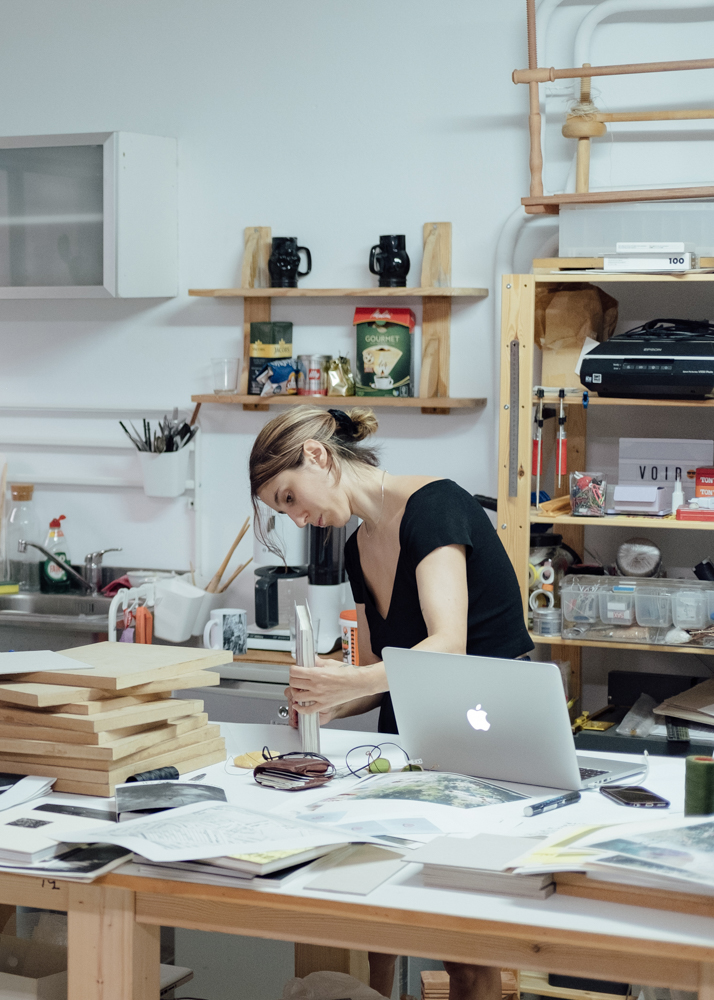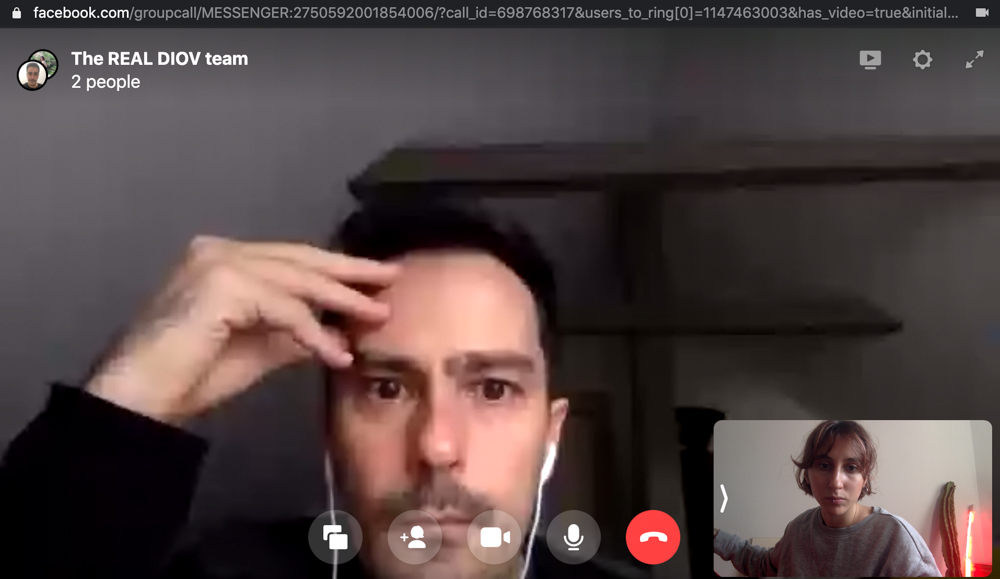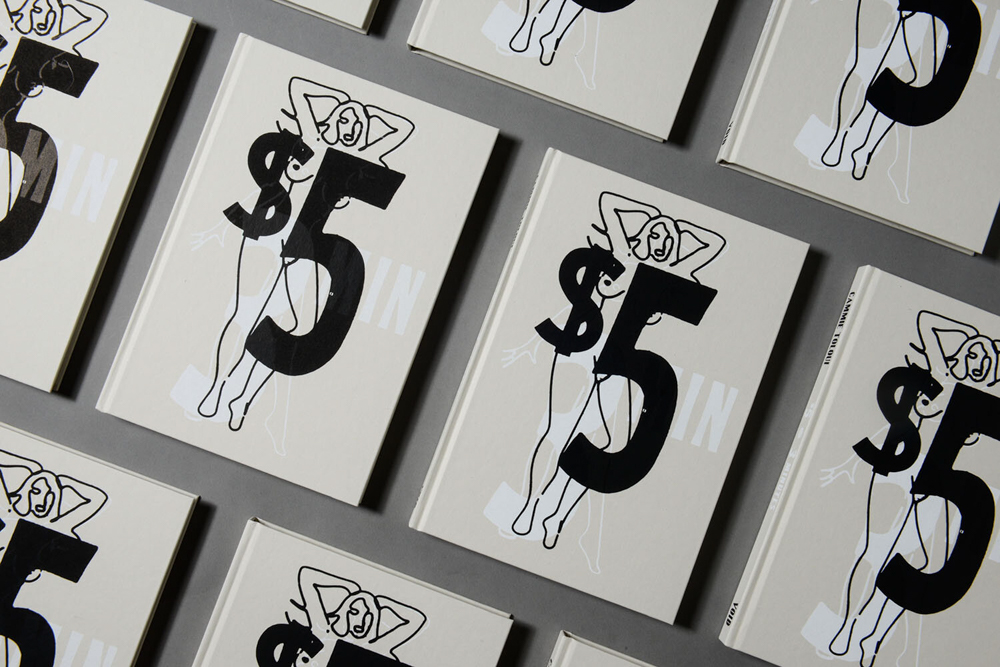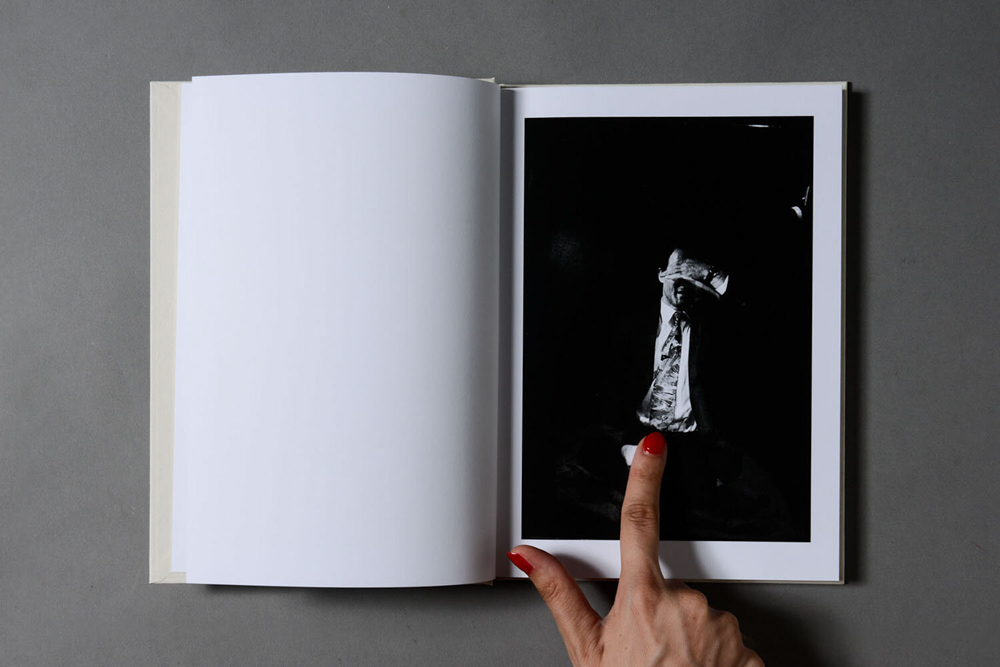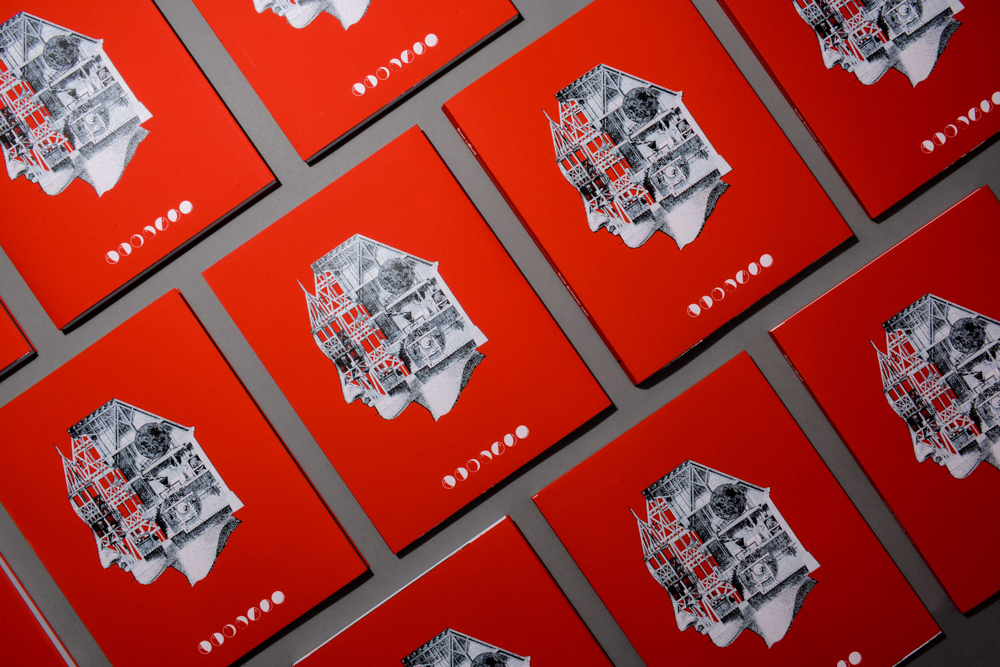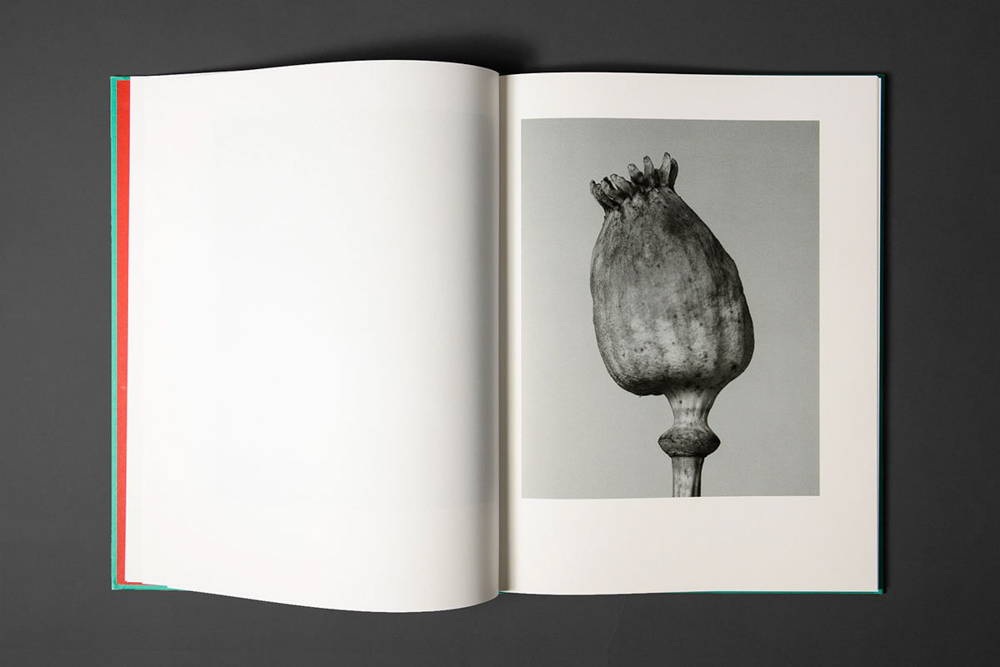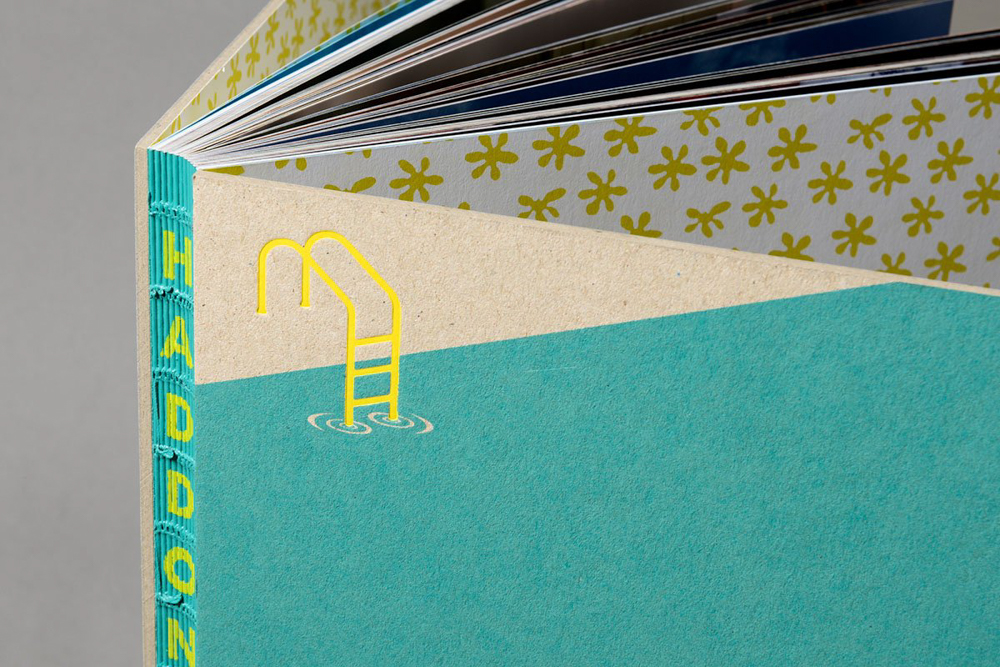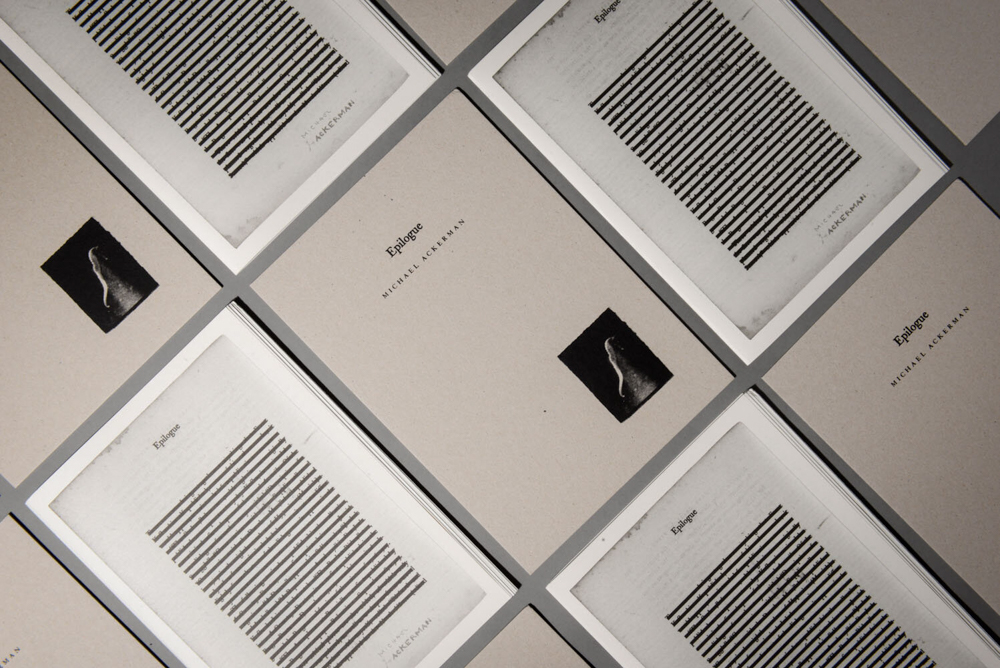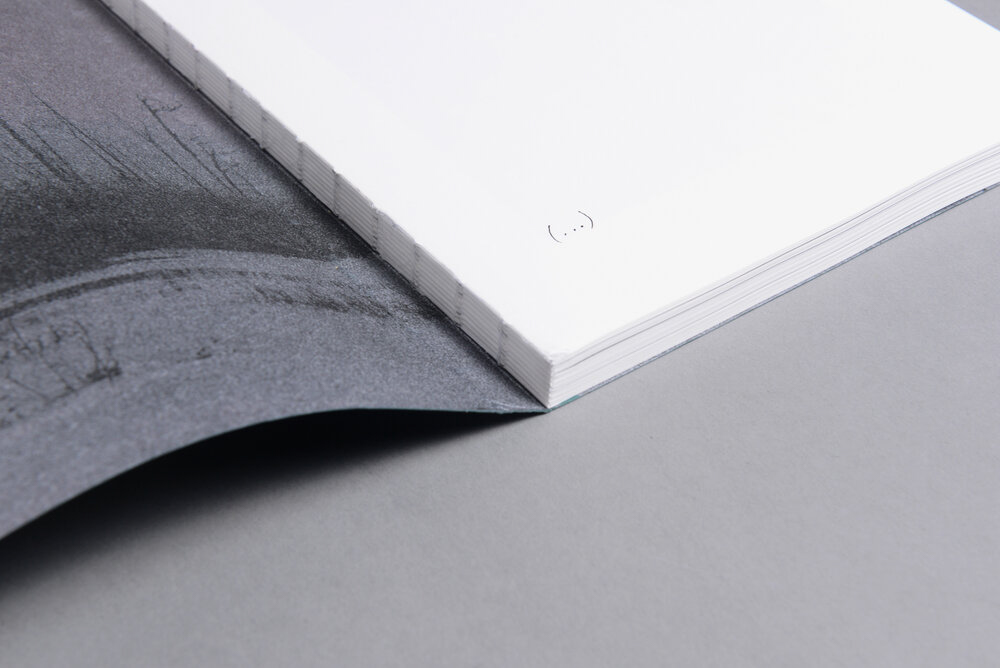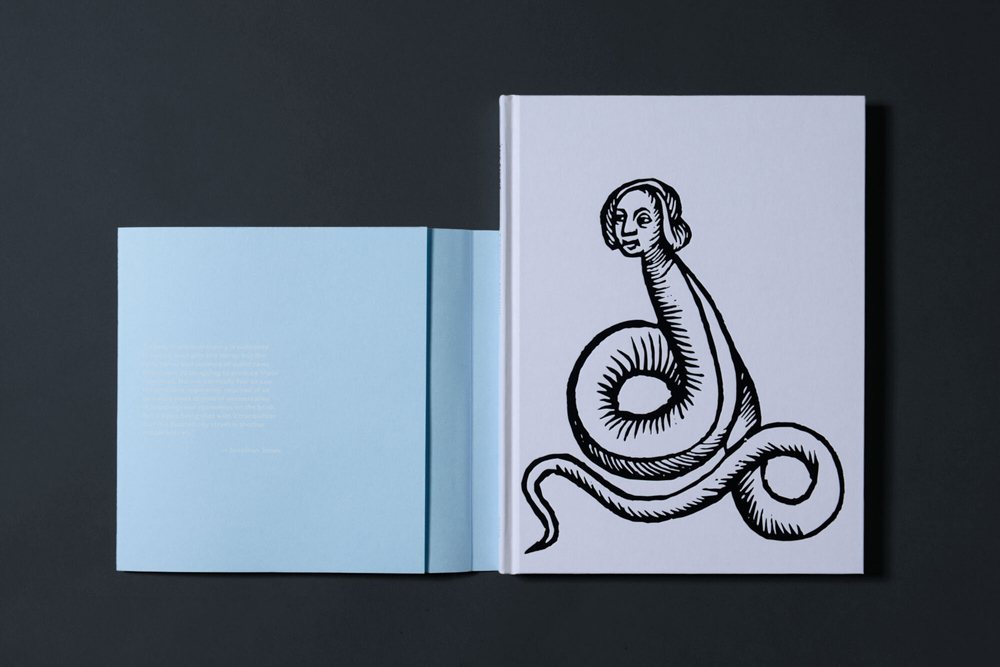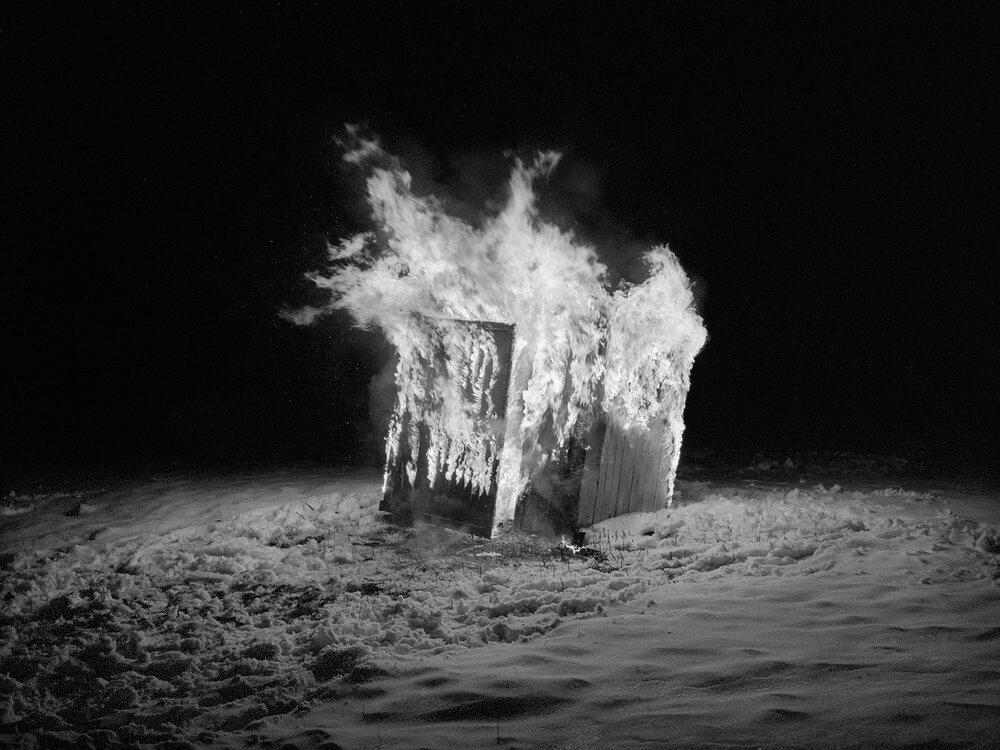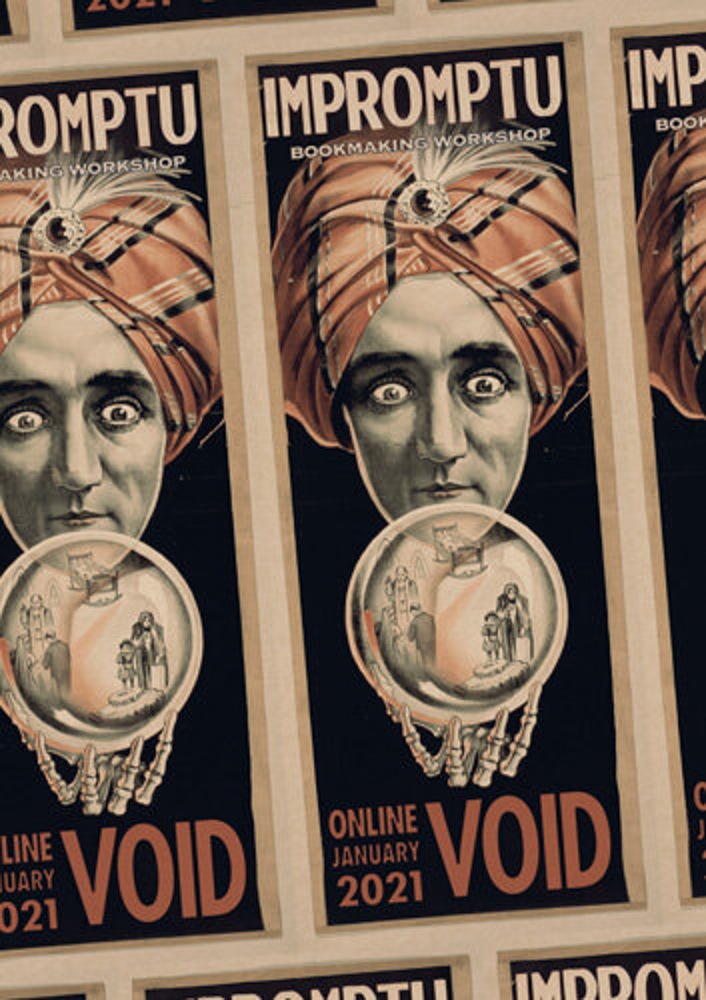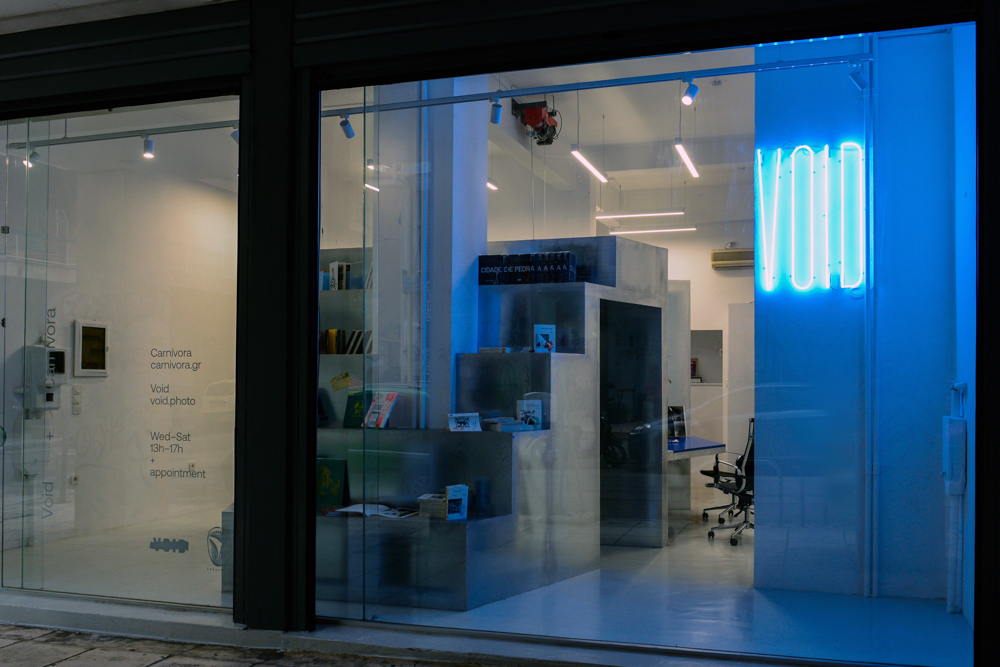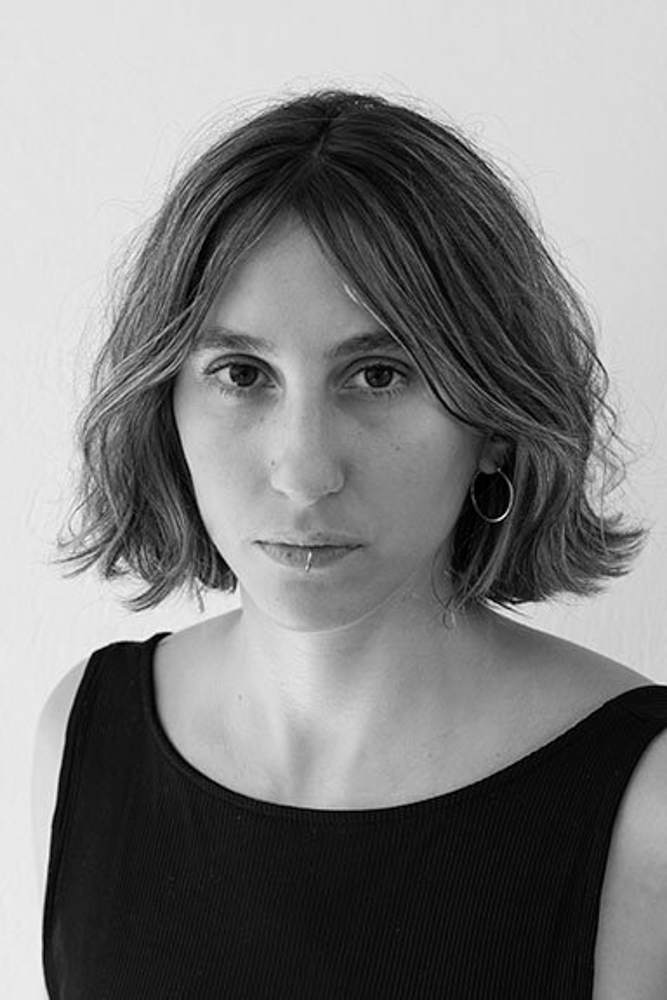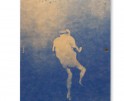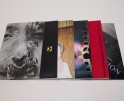Publisher’s Spotlight: VOID
This month is all about books on Lenscratch. In order to understand the contemporary photo book landscape, we are interviewing and celebrating significant photography book publishers, large and small, who are elevating photographs on the page through design and unique presentation. We are so grateful for the time and energies these publishers have extended to share their perspectives, missions, and most importantly, their books.
Void is an independent publishing house dedicated to photography books and education. The project is driven by editor Myrto Steirou and designer João Linneu. Void works with both established and up-and-coming artists, proudly fostering photographers’ debut books. Void has collaborated with many international art institutions since its founding in October 2016. In Void’s books, you will find powerful stories and innovative design, melded together with fine and experimental material. Last, but not least, Void runs its own book-making workshops called Impromptu, which are an opportunity to share its vision about photography books with new and exciting talents.
An interview with Myrto Steirou from VOID follows. Follow VOID on Instagram: @Photo_Void
What is your mission as a publisher?
When we first started Void we had no clear idea of what Void was and what we wanted it to become. We felt the need to create an environment where artists would feel safe and respected and that would be treated fairly. We also wanted to put out work that was fresh and relevant and to reach as many people out of the photography bubble as possible. I believe that those things have been our constant compass through the 5 years of Void’s existence and even though we cannot say we have succeeded in all of them 100%, we are trying our best to accomplish them daily.
What was the first book you published and what did you learn from that experience?
The first book we published was ‘Cidade de Pedra’ by Antoine d’Agata in November 2016. It was in a moment when we had just started Void, out of sheer passion for photography, but as I said earlier with no solid business plan in place. Back then João was working with Antoine as a designer for a book that was supposed to be published by a Brazilian publisher. The publisher decided not to publish the book on the eve of the printing, so together with João we decided to do something as crazy as publish this book, even though we had no real experience in the field. Publishing ‘Cidade de Pedra’ was the best way to learn very fast and very hard the dos and don’ts of publishing. Through Antoine we met someone who offered to host a launch and signing of the book in the Grand Palais during Paris Photo 2016, and I still remember trying to figure out the logistics of issuing an ISBN, printing, shipping the book to Athens, then to Paris, creating a webstore, communicating the launch of the book etc all within the first month of Void’s existence. There are still a lot of things we are learning about being a publisher, but I believe that if we hadn’t taken this crazy decision (and if Antoine hadn’t trusted us with his book), it would have taken years for us to get all the knowledge and experience we got during our first month as a publisher.
What is the focus of your selections?
In the beginning we had a very specific aesthetic that was defined a lot by our first collaborations. Even though we are still fond of dark and existential works, as we grew, we became more interested in discovering new voices that raise important issues of today. I wouldn’t say that we have one specific focus as at this moment we would like to stay as open as possible to new collaborations.
What are the difficulties that you encounter as a publisher?
Being a publisher has been an ongoing struggle. The first two years we experimented in different fields, from bookmaking to workshops and exhibitions, and worked a lot in order to get some recognition and establish an identity. If I could summarize those years, I would say that we travelled, and we failed a lot. We travelled to fairs, festivals, workshops, to meet each other, to meet artists. And we failed in multiple projects, collaborations, and partnerships but most of all we failed financially. I think that 2019 was the first year we had a more solid idea of what we were doing, and things started to feel like they were going the way we wanted. And then 2020… we all know what happened, so we had to adjust to a new reality. As we grow, we face new challenges and by the time we figure out how to face them, new ones appear on the horizon. For sure this is a market we haven’t understood yet 100% and we will continue to learn by confronting new difficulties.
How can an artist get their work in front of you? Any advice for photographers?
There are many ways we have met with the photographers we have worked with. Through open calls, emails we received, through suggestions and introductions from friends and colleagues. During the last years and because of the pandemic and the restrictions it caused on travelling and physically meeting people, all the new books we are going to make were introduced to us through emails.
Due to the number of submissions we receive every day, it’s very helpful when a photographer follows the guidelines we set on our website. We always go through all the emails we receive but it’s unlikely that we will check everything the precise moment that we receive them, so wetransfer submissions sometimes expire before we have the time to download them. Also, we really appreciate it when we understand that a project was sent to us because the artist knows the work that we do and can clearly see how their work could fit into our catalogue. My advice would be to do some research before contacting publishers. Try to find out as much as you can about their publishing model and the works they are publishing and see if this is something that fits with your work. And please be patient 
How do the economics work between the publisher and artist? Does the artist normally contribute financially to the process? If so, to what extent?
When we started Void, both João and I had our own artistic practices and always thought that we would also publish ourselves through Void. Even though as artists we got as far as publishing one zine together (and we understood that we were better publishers that we were photographers), since the first days of Void, we knew we would like to treat artists we are working with the way we would like to be treated. We felt that it was very important for our books to be able to sustain themselves without asking for any funding from the artists themselves. Because of this decision it took some years before Void was able to show any profit, but we are still very proud of our publishing model. In the beginning what we offered to artists was a percentage of the book in copies but after a few years and since our print runs have grown significantly larger and we are now collaborating with Idea Books for distribution, we have changed our business model and instead of offering copies, we are offering an artist fee. That way the artist will not have to deal with storing hundreds of books, and we don’t have to deal with the logistics of shipping hundreds of books and having to compete with the artist for sales. Lately we have managed to get some support from grants for a couple of our books, something we believe will make a huge difference to our business, so any grants that an artist can find are always welcome! We have also tried a publishing model called COOP where we basically co-publish the book together with the artists sharing cost and responsibilities (and also copies) but are still evaluating if this works for us or not.
Is the book design process collaborative?
We invite the artists we work with to be part of every step of the bookmaking process. We usually have long talks with them before starting to work on a book to understand their vision of their work. After that we start working on editing and design for the book, keeping in mind what we discussed. Sometimes our vision of a project doesn’t quite match with that of the artist, and should this occur, we must explain our point of view to them. After a few conversations, we always manage to reach a result that makes both parties happy. We would never publish something that the artist is not happy with, but also, we would never publish something we don’t believe in. So yes, in a way both editing and design are collaborative but as publishers we are still in charge of making those decisions.
What have you published that has been particularly meaningful?
There are two or three moments that we consider very important in Void’s history.
One is our project ‘Hunger’, a series of 7 + 1 epilogue issues of a newspaper. The idea was inspired by Franz Kafka’s short story ‘A Hunger Artist’ that tells the story of a starving artist that keeps his practice with the same passion even after the public’s interest diverges to different and new forms of amusement. We believe that there is a great connection between the hunger artist of the story and the photographers of today that create their art out of passion. Because of this project we had the chance to approach and work with artists that we admired and maybe would never approach otherwise. Some examples are Joan Fontcuberta, Erik Kessels, Thomas Sauvin and Tereza Zelenkova. With the latter two we later worked together on publishing a book, something we are not sure would have happened if we had not published Hunger. Through the open calls of the project, we also met Dylan Haushtor and Paul Guilmoth, authors of Sleep Creek, a project we published in 2019 that is until today our best seller and the book we published in most copies (3250).
Another book we are really proud of publishing recently is ‘5 dollars for 3 minutes’ by Cammie Toloui. The project was shot in the early 90s when Cammie was working as a stripper at the Lusty Lady Theater in San Francisco to fund her photojournalism degree at San Francisco State University. Even though the project is very powerful, Cammie faced a lot of difficulties while trying to find a publisher for it as Cammie’s subjects were not the women working on the club but the customers that visited it and people are not used to seeing men standing naked from this side of the camera.
Finally, for us it is particularly meaningful to publish a debut book of an artist. It feels nice to discover something new and put it out there in the world. Even though those books are usually the riskiest ones for a publisher, they are the ones we enjoy the most.
How many titles do you normally publish in a year and what new editions are on the horizon?
Our goal is to grow and publish more titles each year. This year we published eight titles, and this has been our best year so far. We are also very keen on publishing different kinds of work, enriching our editorial line. Soon we will publish books by Emily Graham, Joselito Verschaeve, Matt Dunne, Dieter De Lathauwer and Maria Sturm all very different among them but all great additions to our catalogue. We are also now working on the ‘Bleak House’ zines series, a project by various artists, curated by Brad Feuerhelm, that is going to be released in a very limited handmade edition. Lastly, a book we haven’t started working on yet, but we are very excited about is ‘Terra Vermelha’ by Tommaso Protti, a very important documentary work about the modern-day Brazilian Amazon.
What specific support do you give artists? Do you have distribution, and do you attend book fairs?
Since last year we have been offering our collaborating photographers an artist fee that depends on the number of the edition and the price of the production. It is similar to royalties but instead of keeping track of every sale we make and paying the artist accordingly, we calculate this artist fee the moment we have a price quotation from our printer. We also have a contract with Idea Books for distribution, something that gives our titles a lot of visibility as they reach places we wouldn’t be able to reach by ourselves. We attend several fairs every year with the most important ones for us being Polycopies in Paris and the one in Arles. What’s listed above is what we “officially” offer to artists, but in reality our actual support comes in many different ways.
There’s a sense of community or a sort of “Void hood” when we publish someone, and we really look forward to taking care of the book and promoting it and the artists as much as possible. We look after small details like keeping a calendar with events related to the artist on our website and promote their activity with the same passion as we do for the book. We also look forward to including them in public libraries, as we believe this amplifies their voice out of the bubble (you can check on our site where every book is publicly available). We also have a very strong communication and social media work done for all the books we publish.
It’s not only the artists we are publishing we are supporting. Once or twice a year we throw our bookmaking workshops called “Impromptu” that we always try to turn into a real learning experience for the people that take part, and we usually follow up with their projects even after the workshops.
Finally, Void is also part of Futures platform, where we support emerging artists in various ways, from tutoring, to meetings and workshops. In general both João and I are very passionate about what we are doing and we care deeply about the books we publish. So our passion and hard work is what we can say is the biggest support we give to our artists.
Myrto Steirou BIO
Greek-born, based in Athens, Myrto Steirou (1989) graduated in International Relations and holds an MSc in Middle East Politics from School of Oriental and African Studies. From 2013–2016, to continue her research on Turkish Politics using photography, she attended a series of photography courses and seminars in Athens and Paris. She has worked on her personal photography projects and as a freelance photographer in different fields such as theater, news, and fashion. In 2016, she co-founded Void where she acts as an editor and project manager. In 2019 she also co-founded Carnivora, an imprint that specializes in Hispanic noir literature.
Posts on Lenscratch may not be reproduced without the permission of the Lenscratch staff and the photographer.
Recommended
-
Publisher’s Spotlight: Smog PressJanuary 3rd, 2024
-
Publisher’s Spotlight: Kult BooksNovember 10th, 2023
-
Publisher’s Spotlight: ‘cademy BooksJune 25th, 2023
-
Publisher’s Spotlight: Brown Owl PressDecember 10th, 2022
-
Publisher’s Spotlight: DOOKSSeptember 26th, 2022

